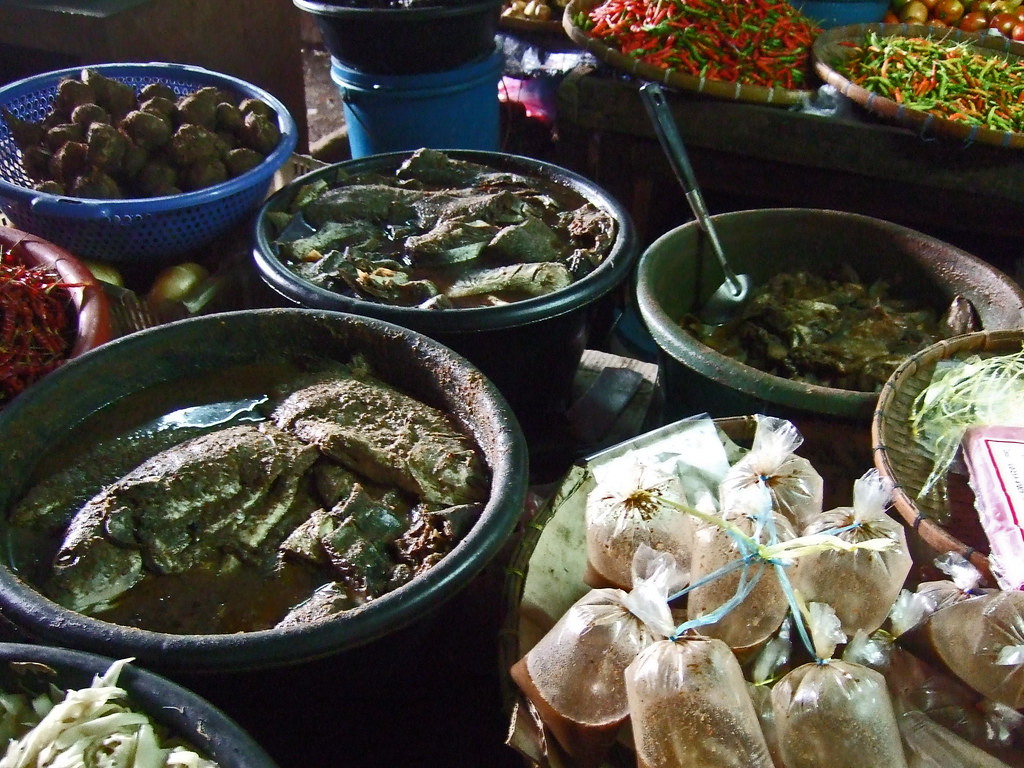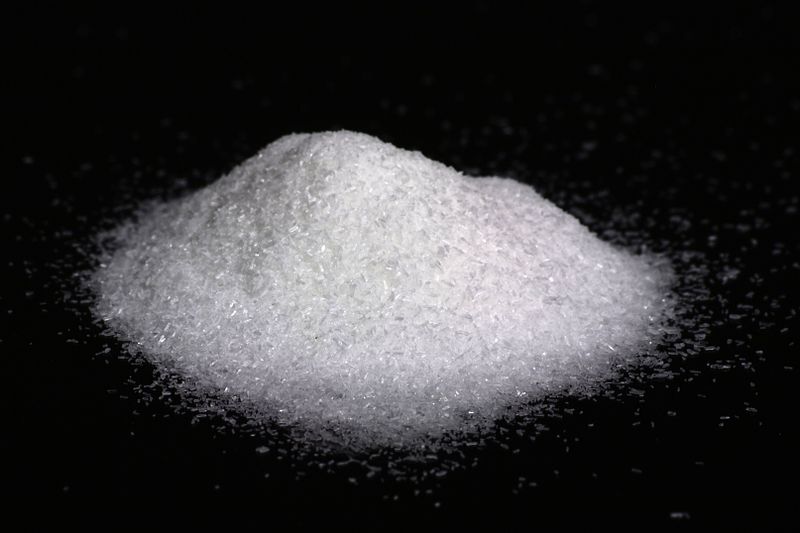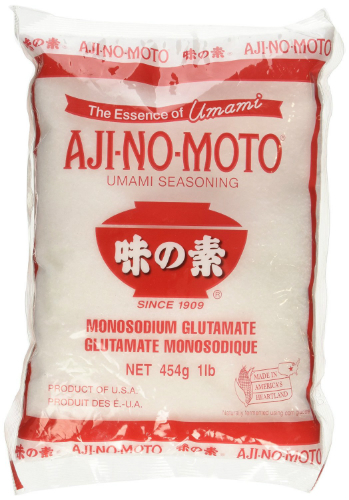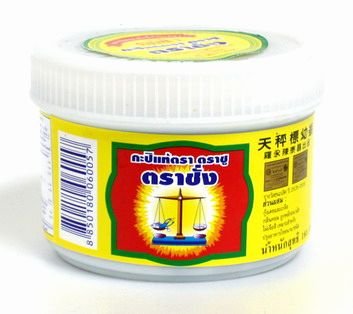
Padaek, like other fermented fish sauces is a rich source of umami. Padaek has a distinct and intense umami taste reminiscent of the sea.
[dropcap]What[/dropcap] is umami?
Umami is defined as the “savoury” taste. It is dubbed as the fifth taste, and completes the five basic tastes. These include sweet, sour, bitter, salty and umami. The word umami is a Japanese loanword and aptly translates to mean “pleasant savoury taste”. Umami is a ubiquitous taste and despite the name, it is not at all exotic. 1 In Lao, the word for umami or savoury is “nua”. 2
Umami…can be described as a pleasant “brothy” or “meaty” taste with a long lasting, mouthwatering and coating sensation over the tongue. 3
People taste umami through receptors for glutamate. Glutamate is a naturally occurring amino acid that is important as a neurotransmitter and in cellular metabolism. It is found in all protein-containing foods, eg: cheeses, mushrooms, meats and fish. It is also commonly found in its salt form as the food additive monosodium glutamate (aka MSG). The identification of umami was proposed by Kikunae Ikeda in 1908 and recognized as a scientific term in 1985. 4
Glutamate has a long history in cooking and has been used as a food addictive and flavour enhancer since antiquity. Fermented fish sauces are rich in glutamate, and “garum” was used in ancient Greece and Rome as a condiment. Today, fermented fish sauces continue to be used across the world for their unique umami taste, ranging from Worcestershire sauce to padaek. 5
Akira Kuninaka discovered an important synergistic effect between glutamate and ribonucleotides (another umami substance). When foods rich in glutamate are combined with ingredients that have ribonucleotides (eg: shiitake mushrooms), the resulting taste intensity is higher than the sum of both ingredients. This synergy of umami explains why various classic food pairings such as hamburger with the lot, and tum mark hoong with grilled chicken for example, make such delicious flavour combos! 6
In Lao cuisine, umami is an important taste and the word “nua” is often heard to compliment many dishes, eg: the fish soup is “nua dee” (or “approvingly savoury”). As a concentrated and rich source of umami, padaek is an indispensable ingredient in Lao cooking. MSG aka “bang nua” (which translates to “savoury powder”) is also a popular ingredient as a flavour enhancer and is sometimes used as an addition or alternative to padaek.

Crystals of monosodium glutamate (MSG). It can be identified by its fine, thin cylindrical crystals and its sharp distinct umami taste. Be careful to not get it confused with caster sugar or table salt!
What is MSG?
Monosodium glutamate (MSG), also known as sodium glutamate or 621, is the sodium salt of glutamate (as pictured above). It is comprised of nothing more than water, sodium and glutamate. The first commercial production of MSG was marketed in 1909 by the Suzuki brothers as “Aji-no-moto”, which translates to “essence of taste”. 7
Originally, MSG was extracted from kombu seaweed. Today, it is made from starch, corn sugar or molasses from sugar cane or sugar beets, and is produced by a natural fermentation process. The glutamate in MSG is chemically indistinguishable from the glutamate that exist in food proteins and the human body metabolises both sources of glutamate in the same way. China-based Fufeng Group is the largest producer of MSG in the world. 8
MSG is used as a flavour enhancer to bring out the best taste in foods, both commercially and in home kitchens. It harmonizes and emphasizes natural flavours and works well with meats, poultry, seafood and many vegetables. Food manufacturers must label a food when MSG is added, either by name or by its food additive code number 621. 9
Personally, I love the taste of umami especially in a traditional Lao herbal soup. However, I don’t use MSG in my cooking. Instead, I use fish sauce, soy sauce, oyster sauce (some brands have 621 in them) and shrimp paste for their umami flavours. I am also in the process of making my own padaek (stay tuned for recipe!) and look forward to using it regularly in my cooking for its unique Lao umami flavour. I believe that the sauces that I use, in combination with salt, sugar and other herbs and spices provide me with enough satisfying flavours that I am happy with in my cooking. However, some cooks might disagree and think that I’m missing out on something by not using MSG. Either way, I am happy to explore the potential of cooking with MSG.
If you want to use MSG in your cooking, Food Insight suggests that as a general guideline, about half a teaspoon of MSG per pound (454 grams) of meat or four to six servings of vegetables should be sufficient. 10
I hope you’ve found this post useful. I believe that the more we know about our food, its ingredients and their properties, the better we can make informed decisions on how we and our family can live a happy and healthy life. What are your thoughts and views on umami and MSG? Do you use MSG or other ingredients for their umami taste in your cooking? If so, how much do you use and in what recipes?
Food for thought:
MSG is one of the most extensively researched substances in the food supply and the safety of MSG as used in foods is approved by the Australian/NZ and other governments worldwide. Many people identify themselves as sensitive to MSG, however scientists have not conclusively linked MSG to asthma or the so called “Chinese Restaurant Syndrome“. Nevertheless, a very small number of people who are sensitive to a range of foods, especially those with asthma, may be sensitive to glutamate; in which case they should refrain from cooking and eating foods with MSG. 11 For more info about the use of MSG in foods, visit here and here.




Did you know?
- Many humans’ first encounter with umami is breast milk. It contains roughly the same amount of umami as broths. 12
- The umami taste is a world phenomenon and Australia’s unique contribution is Vegemite. 13
- MSG tricks your tongue into making you think a certain food is high in protein and thus nutritious. It is not a “meat tenderizer” nor a “preservative”. ref]Reference: http://www.msgtruth.org.[/ref]
Notes:
- Reference: http://en.wikipedia.org. ↩
- Lao is a tonal language and without getting into complexities, the best and easiest English spelling that I can think of for the Lao words for umami and MSG are “nua” and “bang nua”, respectively. Please let me know if you think the spelling should be otherwise. ↩
- Reference: http://en.wikipedia.org. ↩
- Reference: http://en.wikipedia.org, http://en.wikipedia.org. ↩
- Reference: http://en.wikipedia.org, http://en.wikipedia.org. ↩
- Reference: http://en.wikipedia.org, http://www.theguardian.com. ↩
- Reference: http://en.wikipedia.org. ↩
- Reference: http://www.foodinsight.org, http://www.fda.gov, http://en.wikipedia.org. ↩
- Reference: http://www.foodinsight.org, http://www.foodstandards.gov.au. ↩
- Reference: http://www.foodinsight.org. ↩
- Reference: http://www.foodauthority.nsw.gov.au, http://www.foodinsight.org. ↩
- Reference: http://en.wikipedia.org. ↩
- Reference: http://www.umami.org.au. ↩
Leave a Reply